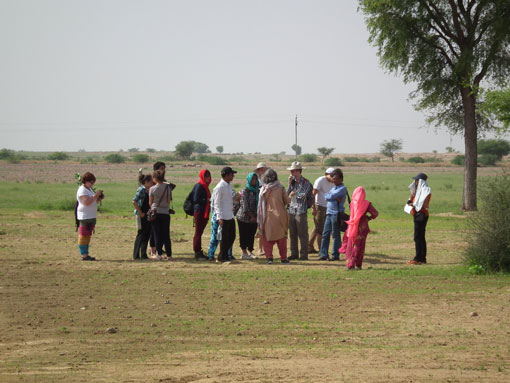I Know What You Will do This Summer

Do you like what you do? Your studies? Your job? After returning with a Master’s degree from the continent down under, I had been grappling with these thoughts. Do I need to enrol myself in a PhD program or work a bit? Do I need to just travel and chill for a bit a short break from it all. Or do I need to make good use of my time and learn.
The earthquake, the mad urban paranoia of growth with skyscrapers all around, waste piled up on the road and so on - the list is overwhelming. Especially, returning home from a city that is so sparsely populated, with good public transport and no beggars on the streets; one wonders if this is the home that I had left a few years ago. Have my two environment studies degrees not equipped me to join the dots in my own country?
Googling told me that going overseas to study or just taking a break from the rigmarole of life was the in thing to do. Visiting Go Abroad; Gooverseas; Internshala; India Fellow; NGO Box; Buddy4Study and some other similar websites came me a fair idea as to what is available. But I wasn’t getting my kind of information – a short term study to help me connect to happenings around would be ideal.
But before I tell you what I finally finally did let me give you short stats. Which would be helpful for you to understand, what it is to take a break to explore a home away from home.
According to UNESCO Institute of Statistics
Students studying in India from the following countries as of 2012:
| Country name | Number of students(as of 2012) |
| United States | 782 |
| Mexico | 5 |
| France | 66 |
| Germany | 18 |
| Norway | 8 |
| United Kingdom | 86 |
| Canada | 243 |
| Iran | 2,131 |
| Afghanistan | 1,599 |
| Nepal | 5,481 |
| Bangladesh | 535 |
| Bhutan | 2,274 |
Indian Students studying abroad as of 2012
| Country name | Number of students(as of 2012) |
| United States | 97,120 |
| Mexico | Not Applicable |
| France | 1,955 |
| Germany | 4,312 |
| Norway | 299 |
| United Kingdom | 29,713 |
| Canada | 8,142 |
| Iran | 25 |
| Afghanistan | 0 |
| Nepal | 0 |
| Bangladesh | Not Applicable |
| Bhutan | Not Applicable |
Some more countries where the Indian Cohort goes to study | |
| Australia | 11,684 |
| Russian Federation | 3,351 |
| Sweden | 1,551 |
| Saudi Arabia | 1,573 |
As a research Associate at the Centre for Science and Environment (CSE), I came across the domino effect the two Study Abroad initiatives that were also commonly referred to as Summer School programs, were having. I scanned through reviews for the Agenda for Survival and the Challenge of the Balanceprograms and couldn’t but help one similarity apart from being based out of India – that they opened up people’s eyes, changed perspectives and provided a break-down to the silos between society and environment.
Interacting with past participants working with the organization, or those who visit the institution to use the library, it was heartening to know the two summer schools are perspective shifting – makes you think beyond the usual is what Bipasha Mazumdar said on an online post. As Katja Wischniewski said in her feedback after attending Challenge of the Balance, “the walk through Mehrauli was awesome. The interactive history talk was great. The stepwell brought a good insight”. The exposure that this summer school provides is so up-close and personal that one past participant, Lin Lews from the United Kingdom noticed that “the lasting impression of Delhi is the dignity of the rubbish collectors, as they deal with the effects of modernity’s plastic and other throw away objects, a hard living but without their input Delhi and other Indian towns and cities would become a horror story.” Another participant, Raghavendra Tenkayala who attended summer school in 2011, had to say that “what better way than this course to bond with people my age who are passionate about environment. Agenda for Survival also gave me an understanding of the politics and sociology behind all the talk around environment.”
In year 2014, the summer school for Indian students saw participation from nine different states of India, while the international summer school had participants coming in from eight different countries. Here lies the USP, I think of these summer schools – diverse cultures, nationality, education streams come together to spend a month together. Besides the classroom lectures and a weeklong field visit to explore the real India, the participants also publish a magazine and a website of their own. For this, they are trained by CSE’s own team of journalists and magazine designers. All the more reason for you to sign up for the summer course 2015!



